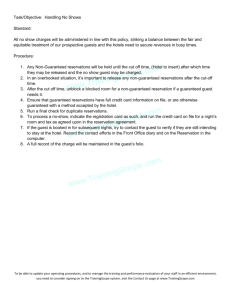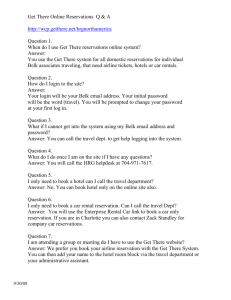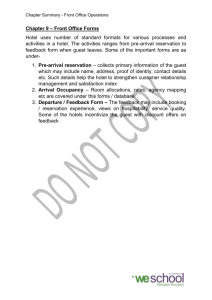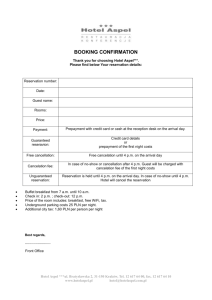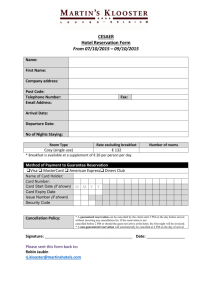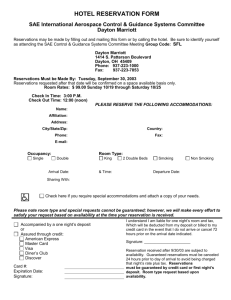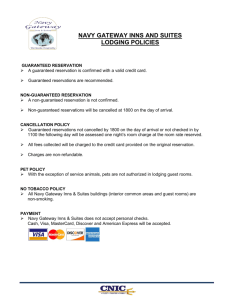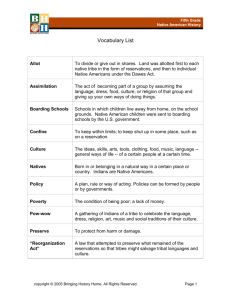Hotel Reservation Software Product Line
advertisement
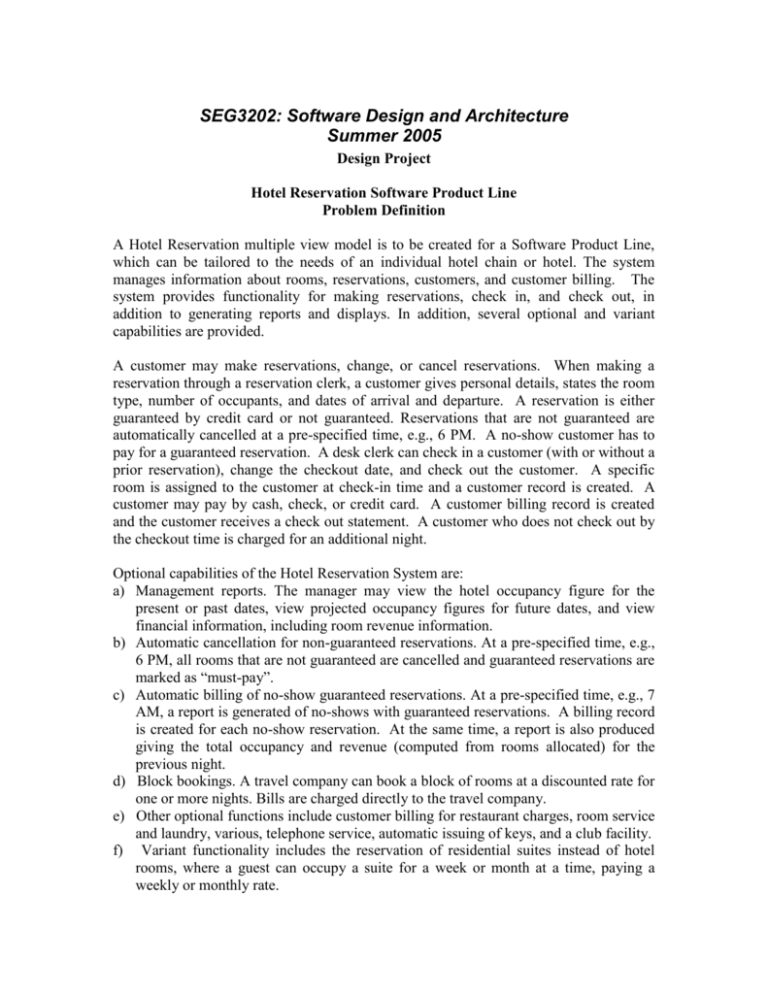
SEG3202: Software Design and Architecture Summer 2005 Design Project Hotel Reservation Software Product Line Problem Definition A Hotel Reservation multiple view model is to be created for a Software Product Line, which can be tailored to the needs of an individual hotel chain or hotel. The system manages information about rooms, reservations, customers, and customer billing. The system provides functionality for making reservations, check in, and check out, in addition to generating reports and displays. In addition, several optional and variant capabilities are provided. A customer may make reservations, change, or cancel reservations. When making a reservation through a reservation clerk, a customer gives personal details, states the room type, number of occupants, and dates of arrival and departure. A reservation is either guaranteed by credit card or not guaranteed. Reservations that are not guaranteed are automatically cancelled at a pre-specified time, e.g., 6 PM. A no-show customer has to pay for a guaranteed reservation. A desk clerk can check in a customer (with or without a prior reservation), change the checkout date, and check out the customer. A specific room is assigned to the customer at check-in time and a customer record is created. A customer may pay by cash, check, or credit card. A customer billing record is created and the customer receives a check out statement. A customer who does not check out by the checkout time is charged for an additional night. Optional capabilities of the Hotel Reservation System are: a) Management reports. The manager may view the hotel occupancy figure for the present or past dates, view projected occupancy figures for future dates, and view financial information, including room revenue information. b) Automatic cancellation for non-guaranteed reservations. At a pre-specified time, e.g., 6 PM, all rooms that are not guaranteed are cancelled and guaranteed reservations are marked as “must-pay”. c) Automatic billing of no-show guaranteed reservations. At a pre-specified time, e.g., 7 AM, a report is generated of no-shows with guaranteed reservations. A billing record is created for each no-show reservation. At the same time, a report is also produced giving the total occupancy and revenue (computed from rooms allocated) for the previous night. d) Block bookings. A travel company can book a block of rooms at a discounted rate for one or more nights. Bills are charged directly to the travel company. e) Other optional functions include customer billing for restaurant charges, room service and laundry, various, telephone service, automatic issuing of keys, and a club facility. f) Variant functionality includes the reservation of residential suites instead of hotel rooms, where a guest can occupy a suite for a week or month at a time, paying a weekly or monthly rate. SEG 3202 Project Deliverables Deliverable 1: Due June 7, 2005 A Domain Analysis and Requirements Model for the Hotel Reservation Software Product Line, which includes: a) Name of project Problem and project objectives Description and allocation of activities of the project team Domain analysis o Glossary o General knowledge about the domain o Customers and users o The environment o Competing software, if any List of assumptions REQUIREMENTS: o Functional requirements o Non-functional requirements b) A Use Case Model, consisting of a description of the actors and use cases, including kernel, optional, and alternative use cases, which fully define the product line. (Make sure to use at least one relationship of each kind: generalization, extend and include) Describe each use case in terms of the actors and their interactions with the system. c) A product line context model depicted on a class diagram showing how the product line interfaces to the external environment. d) A feature model identifying the reusable requirements in the product line. Define all feature dependencies. Show how the features relate to the use cases. Identify any mutually exclusive features. Deliverable 2 (preliminary version): Due June 21, 2005 A Design model (Architectural Design Specification) for the Hotel Reservation Software Product Line, which includes: a) An integrated set of communication diagrams showing subsystems and objects, as well as the message interfaces. b) A Distributed Software Architecture document describing how the system is decomposed into component-based subsystems and the message interfaces between the subsystems (depicted on a concurrent communication diagram). It should also explain how the subsystems were determined. c) A component based software architecture showing the components and connectors, including ports and interfaces. Deliverable 3 (preliminary version): Due July 8, 2005 An Analysis model for the Hotel Reservation Software Product Line, which includes: a) Develop a static model using class diagrams for the entity classes in the product line, attributes of the classes, and the relationships between them. b) Develop interaction diagrams (using either communication diagrams or sequence diagrams) for each kernel, optional and variant use case. Identify the object structuring criteria used. Document briefly the message sequence descriptions. c) Develop a statechart showing the different states of a hotel reservation from initial reservation through final checkout. Make sure that the statechart is consistent with the appropriate interaction diagram(s). d) Develop a feature/class dependency model showing the features, as well as their relationships to optional and variant classes. NB: Your document must include a title page, table of contents, list of figures/tables, references, appendices (if needed), etc.
